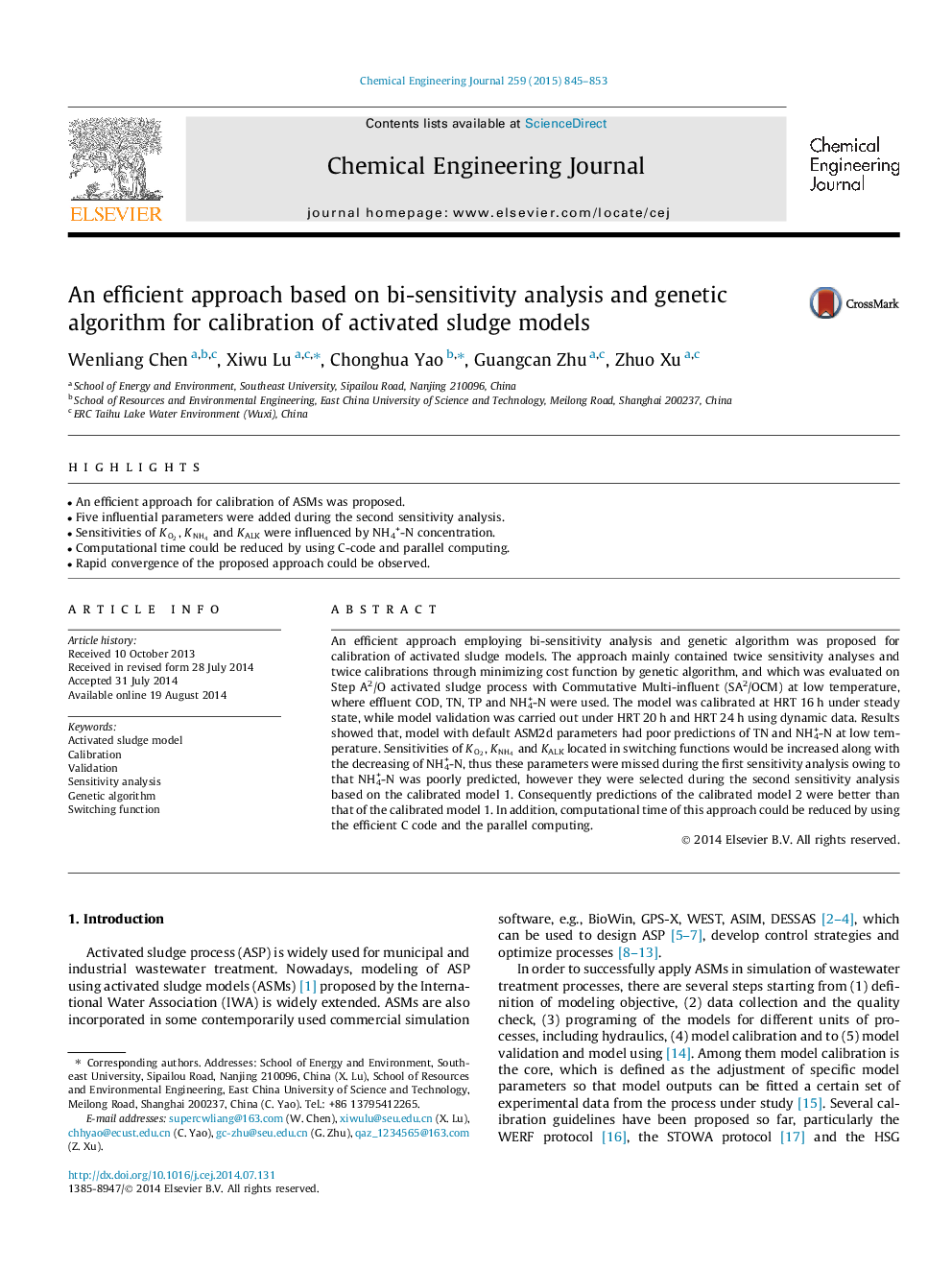| Article ID | Journal | Published Year | Pages | File Type |
|---|---|---|---|---|
| 6586059 | Chemical Engineering Journal | 2015 | 9 Pages |
Abstract
An efficient approach employing bi-sensitivity analysis and genetic algorithm was proposed for calibration of activated sludge models. The approach mainly contained twice sensitivity analyses and twice calibrations through minimizing cost function by genetic algorithm, and which was evaluated on Step A2/O activated sludge process with Commutative Multi-influent (SA2/OCM) at low temperature, where effluent COD, TN, TP and NH4+-N were used. The model was calibrated at HRT 16Â h under steady state, while model validation was carried out under HRT 20Â h and HRT 24Â h using dynamic data. Results showed that, model with default ASM2d parameters had poor predictions of TN and NH4+-N at low temperature. Sensitivities of KO2, KNH4 and KALK located in switching functions would be increased along with the decreasing of NH4+-N, thus these parameters were missed during the first sensitivity analysis owing to that NH4+-N was poorly predicted, however they were selected during the second sensitivity analysis based on the calibrated model 1. Consequently predictions of the calibrated model 2 were better than that of the calibrated model 1. In addition, computational time of this approach could be reduced by using the efficient C code and the parallel computing.
Keywords
Related Topics
Physical Sciences and Engineering
Chemical Engineering
Chemical Engineering (General)
Authors
Wenliang Chen, Xiwu Lu, Chonghua Yao, Guangcan Zhu, Zhuo Xu,
